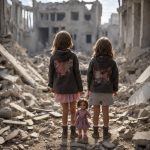
Few people can imagine a childhood where the sound of shelling and military drones is commonplace, as well as witnessing the destruction of neighbourhoods and extreme violence towards friends and loved ones. For individuals living in Gaza, exposure to traumatic war-related events has been commonplace for generations.
Gaza has one of the world’s youngest populations, with almost 65% of the population under 25 years old. There is currently a humanitarian crisis in Gaza, with significant adverse effects on the mental health of these children and young people.
Four years ago, a study by El-Khodary (2020) found that 88% of Palestinian children in the Gaza Strip had experienced personal trauma, 84% had witnessed trauma in others and 88% had observed property demolition. The study concluded that 54% of the participants were diagnosed with Post-Traumatic Stress Disorder (PTSD). Among peace-time populations, PTSD affects around 6% (Kolltveit et al., 2012)
This blog summarises the findings of a scoping review (Abudayya et al, 2023), which aimed to identify evidence on the consequences of war-related trauma reactions among young people living in the Gaza Strip.
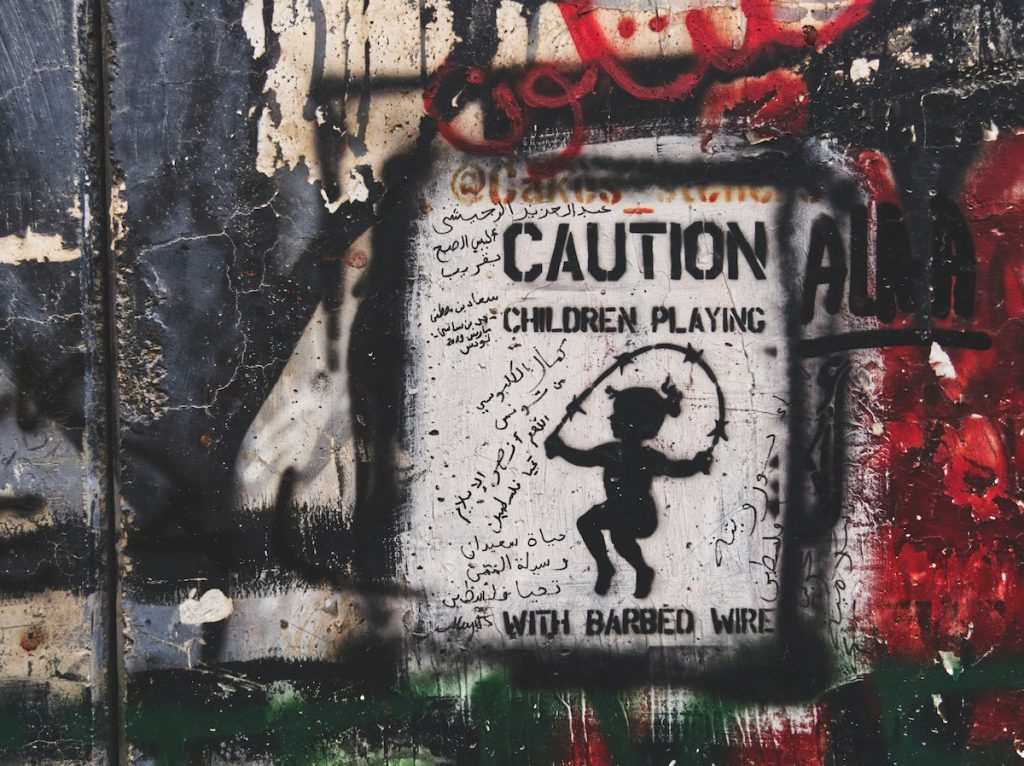
The majority of Gaza’s population are children and young people, with 65% of the population under 25 years old.
Methods
This study was a systematic scoping review adhering to the Preferred Reporting Items for Systematic Reviews and Meta-Analyses (PRISMA) guidelines. The authors searched eight databases for literature published between 2011 and 2022. The review does not include evidence from the last two years (2023-2024), where further significant military intervention and war-related events have occurred in the Gaza Strip. Studies were included if published in English and focused on Palestinian young people living in the Gaza Strip under 19 years of age. All included studies were peer-reviewed journal articles. The five authors identified 4,812 papers and 74 were eligible for full-text screening.
Results
Twenty-four studies were identified reporting on war-related trauma stress among Palestinian children and young people living in the Gaza Strip. Seven studies were qualitative and 18 studies were quantitative.
Poor mental health outcomes were found to be highly prevalent among Palestinian young people, in particular, post-traumatic stress disorder, depression, and anxiety. Exposure to political violence and traumatic war experiences is a major risk factor for behavioural and emotional symptoms. Access to mental health care is significantly limited by restrictions to movement and the shortage of professionals, facilities, and funding.
Studies in the review shed light on the types of traumatic experiences that children face, in addition to their frequency. Being injured or having a family member injured by the occupying forces was most common, while being used as a human shield or arrested were the least reported (Hashemi et al., 2017).
Similarly, Khamis (2012) reported that about 30% of Palestinian adolescents experienced a high-magnitude traumatic event due to war, with family members being killed or injured and houses being demolished being the most common trauma. More recently, Al Ghalayini and Thabet (2017) found that the most common traumatic experiences reported by Palestinian pre-school children were hearing shelling, hearing drones, and seeing mutilated bodies.
Young people cannot escape this environment and, therefore, implement resilience and coping strategies. Veronese et al. (2022) used a drawing task with 75 children to explore sources of safety, security, and insecurity. Many places of safety, including homes, schools and mosques, were also sources of unsafety and insecurity.
A study by Diab et al. (2019) investigated the extent to which emotion regulation could protect children from war-related trauma. Of 482 children aged 10-13 years, they found that none of the emotion regulation strategies could fully protect a child’s mental health from the negative impact of war trauma. Higher psychological well-being was seen among those who had emotion regulation facilitated by an adult, suggesting that children could be better supported with greater support and intervention from mental health practitioners.
Across the 24 studies, 13 different measurement tools were used to assess the impact of war-related trauma in children and young people, including:
- The Gaza Traumatic Event Checklist (GTECL),
- Spence Children’s Anxiety Scale (SCAS),
- Posttraumatic Stress Disorder Reaction Index (UCLA PTSD-RI), Posttraumatic Growth Inventory (PTGI) short form,
- Child PTSD Symptom Scale—parent form (CPSS),
- Harvard Trauma Questionnaire (HTQ),
- Peritraumatic Dissociative Experiences Questionnaire,
- Post-traumatic stress symptoms (PTSS) (CRIES) assessment,
- War-Traumatic Events Checklist (W-TECh),
- Emotion Regulation Questionnaire for Children (ERQ),
- Depression Self-Rating Scale,
- Strengths and Difficulties Questionnaire (SDQ),
- Mental Health Continuum–Short Form for youth (MHC–SF)
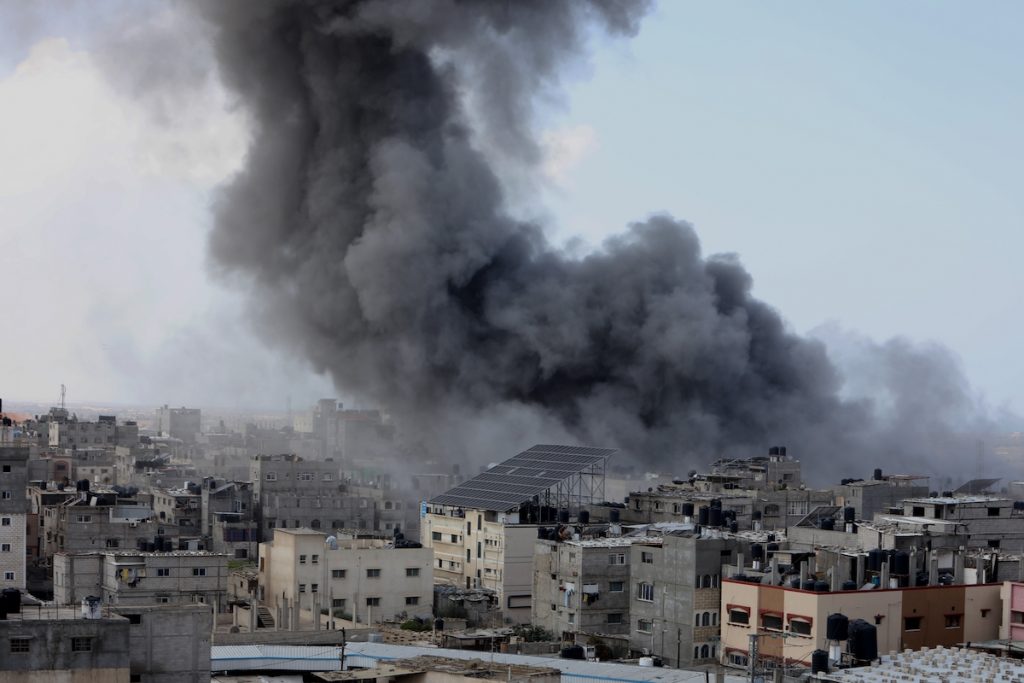
Studies shed light on the types and frequency of traumatic experiences that Palestinian children face, including witnessing death and destruction.
Conclusions
- This review underscores the severe mental health challenges among young Palestinians in Gaza due to a state of constant humanitarian emergency caused by the occupying forces (WHO, 2022; United Nations, 2024a).
- It reveals high rates of PTSD, depression, and anxiety linked to persistent exposure to war-related trauma and violence.
- The review also finds that young people are not receiving adequate support or intervention.
- There is an urgent need to deliver targeted interventions to support Gaza’s youth and investigate the most beneficial approaches through longitudinal studies.
- The review highlights a need for qualitative studies that amplify the voices of young Palestinian people and ensure that interventions are informed by their experiences.

The review highlights a need for qualitative studies that amplify the voices of young Palestinian people.
Strengths and limitations
This scoping review took a rigorous and systematic approach to data searching, selection, and extraction, involving five authors and ensuring data collation quality by involving a highly qualified library specialist. Thorough searches with clear search criteria were conducted across eight databases. The scoping review’s inclusive approach incorporated a wide range of study types and methodologies
An important strength of this study is its identification of a significant gap in the literature – specifically, the lack of qualitative research on child and adolescent mental health in the Gaza Strip. This finding underscores the need for more in-depth qualitative studies with children and young people to better understand the unique mental health challenges they face.
As this was a scoping review aimed at summarising and disseminating research findings rather than evaluating study validity or reliability, critical appraisals were not used – this remains in line with the PRISMA guidelines. Using a quality appraisal tool could help future researchers prioritise validated methods and outcome measures in their research on Palestinian mental health. Particularly when working with children and adolescents in unsafe areas, it is useful to be aware of the shortest and clearest outcome tools when researching their mental wellbeing and to do so in a culturally sensitive way.
This review is limited to peer-reviewed articles published in the English language, the authors did not extensively search grey literature sources, which may have led to some relevant studies being missed. Given children in Gaza predominantly speak Arabic, it is essential to consider this linguistic aspect when researching child and adolescent mental health. Additionally, there is diversity in language and conceptualisations used by young people to describe their experiences of distress (Bellairs-Walsh, 2023). Therefore, it is crucial for researchers and clinicians to be mindful of these linguistic nuances to ensure a clearer comprehension of young Palestinians’ experiences.
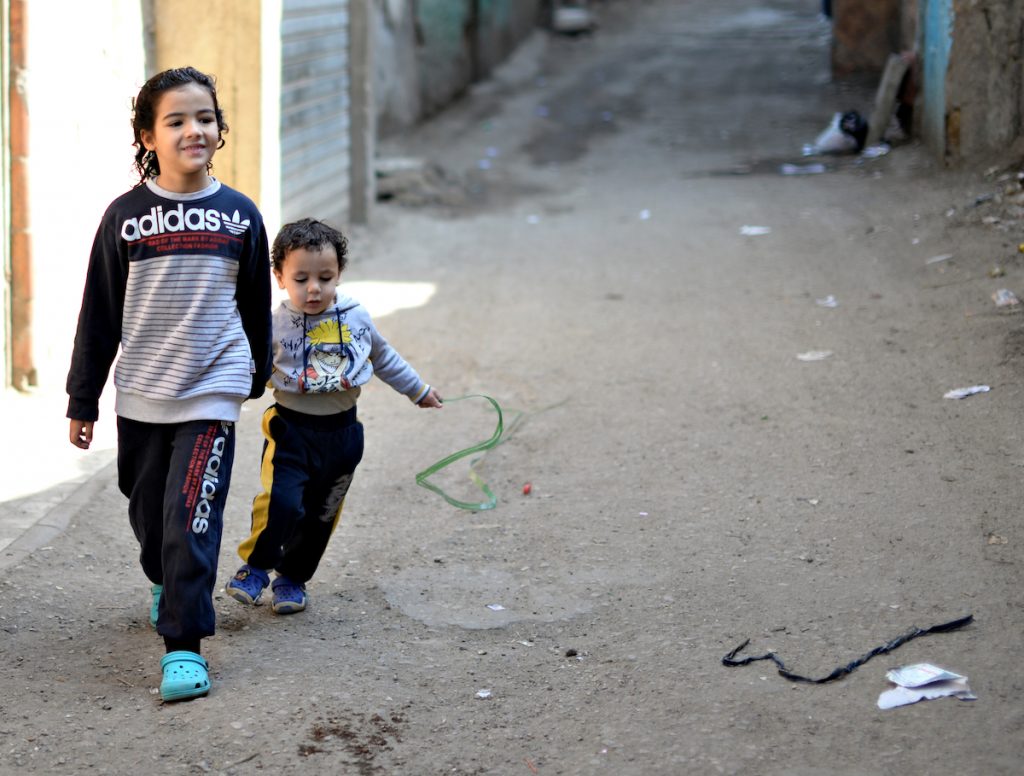
This study identifies the lack of research on child and adolescent mental health in the Gaza Strip to help inform clinical interventions.
Implications for practice
This scoping review underscores the urgent need for interventions addressing the mental health challenges confronting Palestinian children and young people in the Gaza Strip, stemming from war-related trauma. This includes initiatives aimed at enhancing access to mental health services and establishing culturally appropriate support mechanisms.
Furthermore, the review evaluates the effectiveness of intervention programs centred on emotion regulation and mindfulness in mitigating PTSD symptoms and enhancing emotional regulation, depression, and anxiety. Such insights are invaluable for clinicians engaged in aiding this vulnerable demographic. The review advocates for culturally tailored mental health interventions and support services while highlighting the necessity for additional qualitative research to address gaps and enhance mental health service delivery. Recent literature may guide clinicians to adapt their approaches for service users from this ethnic community, particularly for British Palestinians and Gazans living and studying in the UK.
The findings from this review align with the priorities in the Palestine Child and Adolescent Mental Health National Strategy 2023 to 2028, focusing on safety and security, reducing poverty, and protecting childhood (Dabbagh et al, 2023). The Child and Adolescent Mental Health National Health Strategy 2023-2028 document is a collaborative partnership with the UK-charity Medical Aid for Palestinians (MAP) and The Royal College of Psychiatrists, UK, developed for the Palestine Ministry of Health. This highlights the importance of global mental health research and the necessity for allocated funding to address these critical health issues.
Palestinian children continue to endure disruptions to their education, sleep, and access to food, further exacerbated by aid blockages, jeopardising their lives. The UN has reported a higher number of children killed by the Israeli military in Gaza compared to child casualties in four years of global conflicts combined (United Nations, 2024b). It is imperative that the children of Gaza receive the necessary support to safeguard their mental health and live safely and free from fear. This necessitates the safe passage of humanitarian aid, particularly medicines, and the safeguarding of hospitals and medical personnel in accordance with international laws and conventions.
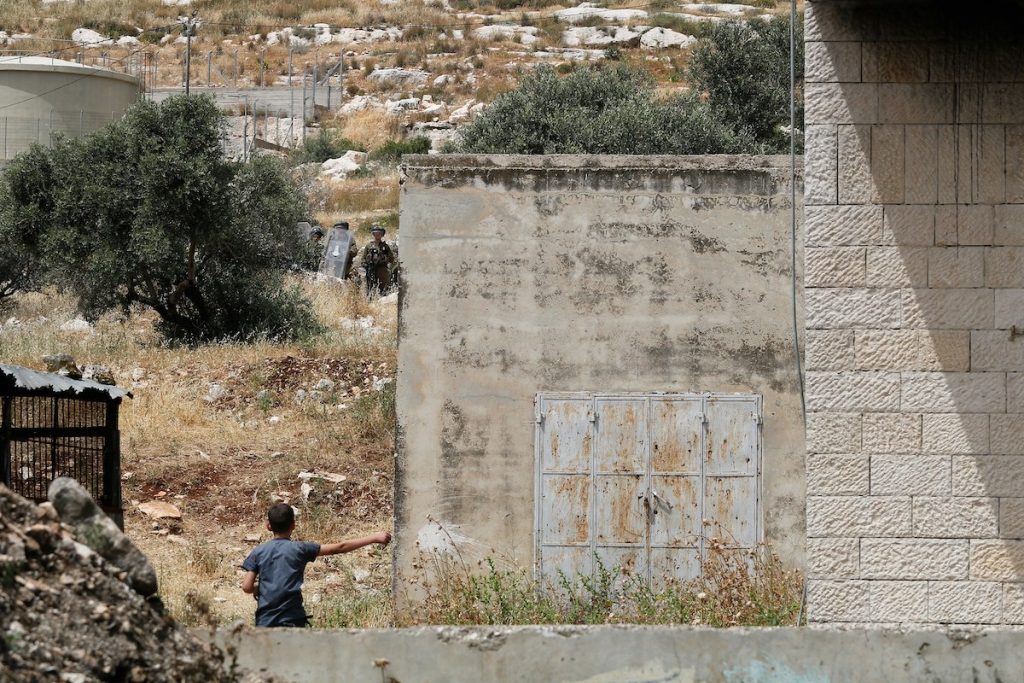
The scoping review underscores the urgent need for interventions addressing the mental health challenges confronting Palestinian children and young people in the Gaza Strip.
Statement of interests
None.
Links
Primary paper
Abudayya, A., Bruaset, G. T. F., Nyhus, H. B., Aburukba, R., & Tofthagen, R. (2023). Consequences of war-related traumatic stress among Palestinian young people in the Gaza Strip: A scoping review. Mental Health & Prevention, 32, 200305
Other references
Al Ghalayini, H & Thabet, A. (2017). The relationship between war trauma and anxiety and posttraumatic stress disorder among preschool children in the Gaza strip. The Arab Journal of Psychiatry, 28(1), 36–45.
Bellairs-Walsh, 2023, Young people’s experiences of suicidal distress in their own words, https://www.nationalelfservice.net/mental-health/self-harm/suicidal-distress-young-people/
Dabbagh, N., Jaber, S., Raboczki, A., Tina, E., & Al-Uzri, M. (2023). Developing a National Strategy for Child and Adolescent Mental Health in Palestine. BJPsych Open, 9(Suppl 1), S84–S85.
Diab, M., Peltonen, K., Qouta, S. R., Palosaari, E., & Punamäki, R. L. (2019). Can functional emotion regulation protect children’s mental health from war trauma? A Palestinian study. International journal of psychology, 54(1), 42-52.
El-Khodary, B., Samara, M., & Askew, C. (2020). Traumatic events and PTSD among Palestinian children and adolescents: the effect of demographic and socioeconomic factors. Frontiers in psychiatry, 11, 485884.
Hashemi, B., Ali, S., Awaad, R., Soudi, L., Housel, L., & Sosebee, S. J. (2017). Facilitating mental health screening of war-torn populations using mobile applications. Social psychiatry and psychiatric epidemiology, 52, 27-33.
Khamis, V. (2012). Impact of war, religiosity and ideology on PTSD and psychiatric disorders in adolescents from Gaza Strip and South Lebanon. Social science & medicine, 74(12), 2005-2011.
Kolltveit, S., Lange‐Nielsen, I. I., Thabet, A. A. M., Dyregrov, A., Pallesen, S., Johnsen, T. B., & Laberg, J. C. (2012). Risk factors for PTSD, anxiety, and depression among adolescents in Gaza. Journal of traumatic stress, 25(2), 164-170.
United Nations (2024a) Rights expert finds ‘reasonable grounds’ genocide is being committed in Gaza.
United Nations (2024b). Gaza: Number of children killed higher than from four years of world conflict.
Veronese, G., Cavazzoni, F., Fiorini, A., Shoman, H., & Sousa, C. (2022). Human (in) security and psychological well‐being in Palestinian children living amidst military violence: A qualitative participatory research using interactive maps. Child: care, health and development, 48(1), 159-169.
WHO (2022) Mental health in emergencies. World Health Organization.
Photo credits
- Photo by Jakob Rubner on Unsplash
- Photo by Diana khwaelid on Unsplash
